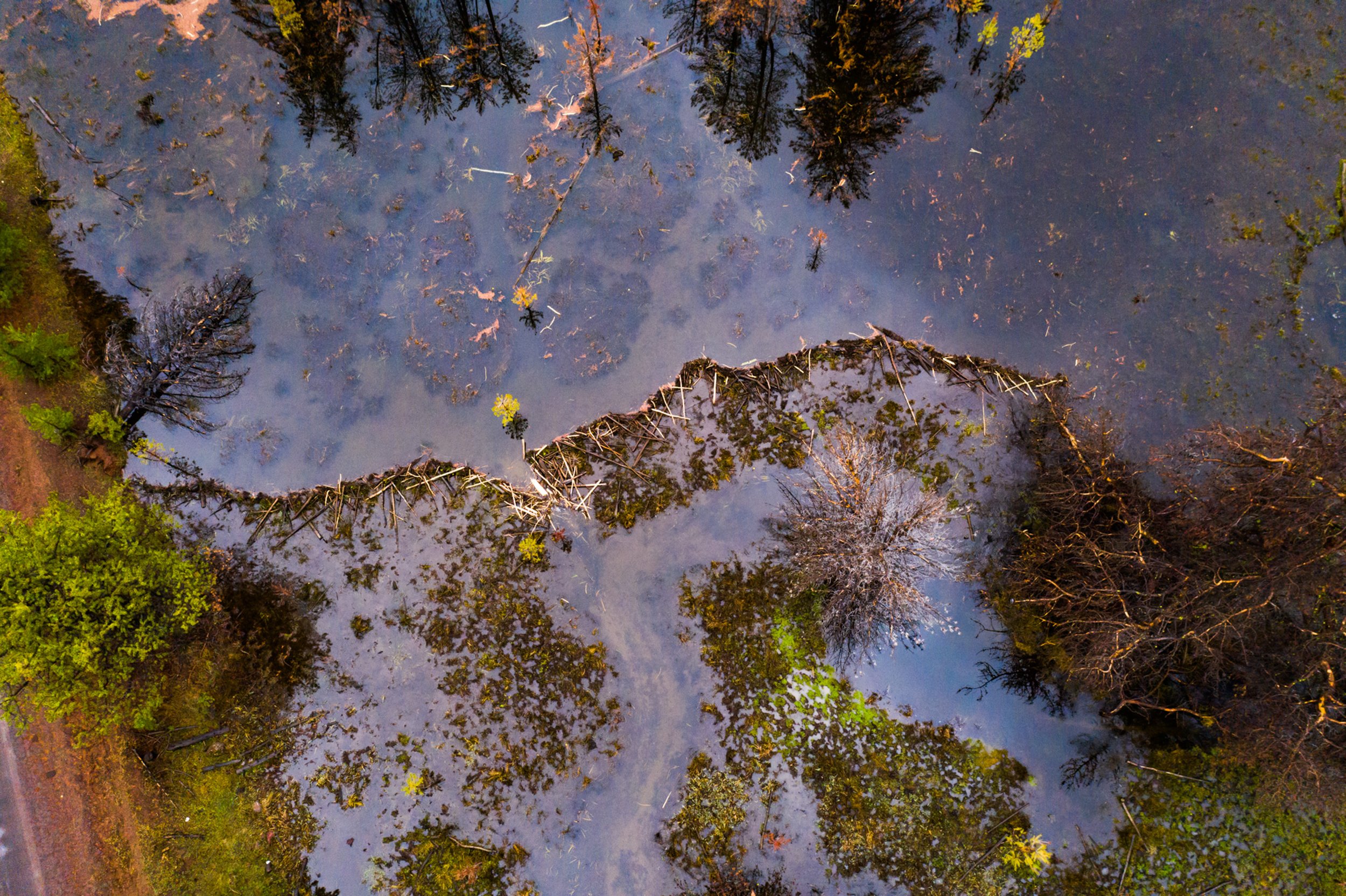
Beavers Drive Healthy Water Cycles
Beaver Benefits
Beavers drive healthy water cycles
Water is constantly cycling throughout the landscape. It is easy to see how it travels through rivers, lakes, and oceans, but it also moves through the plants, air, and soil. Many different processes drive these complex movements, and some processes, like draining wetlands, can disrupt them. Beavers play a large role in this cycle by creating complex wetlands that keep water on the landscape.
Water is the key to life. Moist air is driven across the land by winds and clouds become heavy with rain as they pick up more moisture from the land.¹ ² Many scientists also believe that pressure differences created by large forests and other moist areas influence the movement of moist air as well. Sometimes this can help ‘pull’ water inland, creating a biotic pump (meaning the pump that drives life).³ Land development that removes these moist rain pathways can disrupt this pump and accelerate the effect of droughts.
The living earth ‘sweats’ as water on its surface evaporates and plants pull water from the ground and release it into the air. This process (called evapotranspiration) keeps areas cool and humid. It can create fog and saturated air that fuels clouds and rain—a cycle that helps keep the land moist.
Winds and low-pressure forces move moist air inland → Rising moist air helps develop rain clouds and creates low pressure near the ground that pulls in air from nearby → Dry areas inhibit rain clouds and are less likely to create the strong low-pressure zones that pull in moist air.⁴
Wetlands and forests slow and store water. Developed areas are often hot and dry.
So beavers can help make it rain?
Yes! When it comes to creating and maintaining wetlands, beavers do it best. Wetlands are very humid environments that contribute lots of water to the air from their open ponds and extensive vegetation. When we prioritize protecting or creating wetlands, we help ensure the water cycle remains functional. Beaver wetlands offer protection against drought and wildfires and ensures our landscapes are resilient to the impacts of climate change.
Scientific Citations
1 - Millán, M. (2006). Climate Change and Drought: The Impact of Land-use Feedbacks on the Hydrological Cycle, Slide #28. Presentation at the European Union’s Water Side Event, Nairobi, Kenya. https://www.researchgate.net/publication/363884707_Climate_Change_and_Drought_The_Impact_of_Land-use_Feedbacks_on_the_Hydrological_Cycle_How_land-use_perturbations_in_the_sub-tropical_latitudes_can_alter_local_rain_regimes_increase_drought_and_propaga
2 - Millán, M. (2014). Extreme hydrometeorological events and climate change predictions in Europe. Journal of Hydrology, 518, 206-224. DOI: 10.1016/j.jhydrol.2013.12.041
3 - Makarieva, A. and Gorshkov V. (2007). Biotic pump of atmospheric moisture as driver of the hydrological cycle on land. Hydrology and Earth System Sciences, 11(2). DOI: 10.1016/j.jhydrol.2013.12.041
4 - Pausas, J. and Millán, M. (2019). Greening and browning in a climate change hotspot: the mediterranean basin. Bioscience, 69(2), 143-151. https://doi.org/10.1093/biosci/biy157

